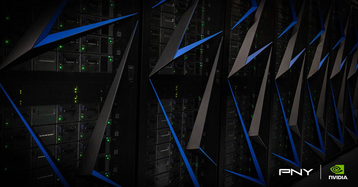The supply chain has been an ongoing issue for the past few years, and sadly it does not look like it will have an industry-wide fix anytime soon.
This leaves companies in a predicament where they have to seek their own solutions to the problems facing them, and it is this that we talked with PNY’s Nicolas Sagnes about.
A key element of the supply chain hitch is chip confusion. First, we heard that there weren’t any chips, then we were hearing that there were too many chips, but they were chips of the wrong kind. There still does not seem to be any clarity.
“It's an ongoing issue that's still not solved in the market today. It's been going on for quite some time now, and it’s impacting data center deployments all across the world,” agreed Sagnes. “Nvidia has been taking major steps to address these issues by revamping its manufacturing process and being closer to the market, and as a value-add partner to Nvidia, we are close to the market.”
PNY works very closely with Nvidia, and what PNY does, is create project visibility.
“We work hand in hand with our partners to understand what the end user deployment is going to look like, and the type of technologies that are needed to solve the use case and the application, and then in that regard, we'll take the inventory position in advance. We have to make that financial investment in order to bring the parts in earlier.
“Our partner will work with the end user with the applications and solve all the contractual issues and deployment issues, be it colocation deployment or even cloud contracts. The second the end user is ready to deploy, we make sure that there is not one screw missing in their bill of materials.”
It is also the job of companies like PNY to guide customer choices. While the people and entities which are doing high-performance computing and advanced AI applications will know what technology they want and how they are going to use it, many other companies will not understand the importance of the right networking infrastructure.
“It's not only the GPUs and the CPUs that are actually running these algorithms, it's also looking at the networking side of things. Do I have the right switch systems, the right adapters, and the right cabling infrastructure deployed so I can accelerate my AI workloads?” explained Sagnes.
“If you are investing heavily in compute, in GPU or storage, high-performance storage, cloud storage solutions, and you rely on networking infrastructure that is dated and older, you're just going to waste your capital, because you will only be as strong and as performant as the weakest link in your infrastructure.
“We see a lot of companies especially in enterprises that consistently overlook this or they work with legacy vendors on the networking side, and then when they deploy and they actually get to the findings of the AI solution, they see a lack of performance: higher latency and smaller throughput.”
Companies like PNY smooth the process for the end user. Whether you are trying to build something from the ground up, or you already have some elements in place, PNY can find the right partners for you to work with and help support the entire supply chain from the back end.


